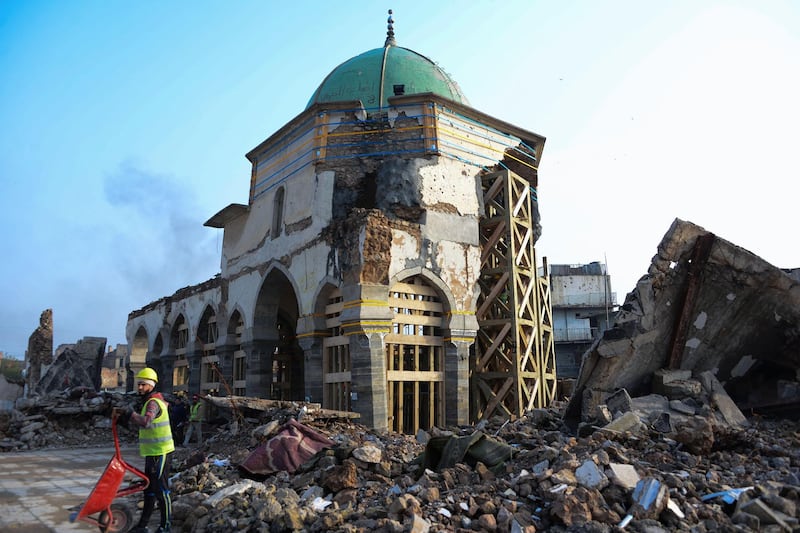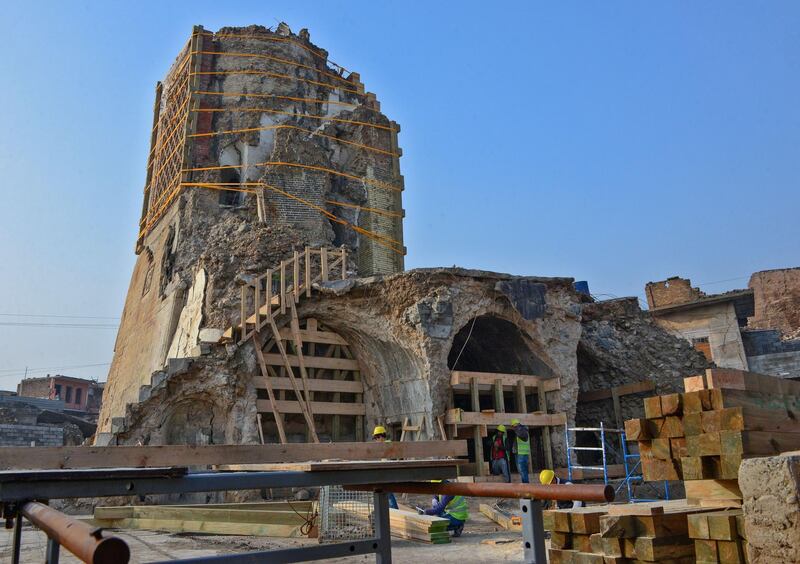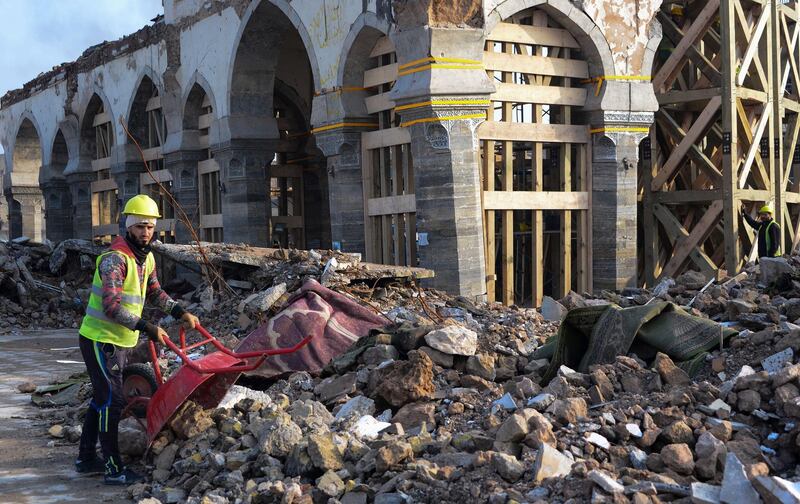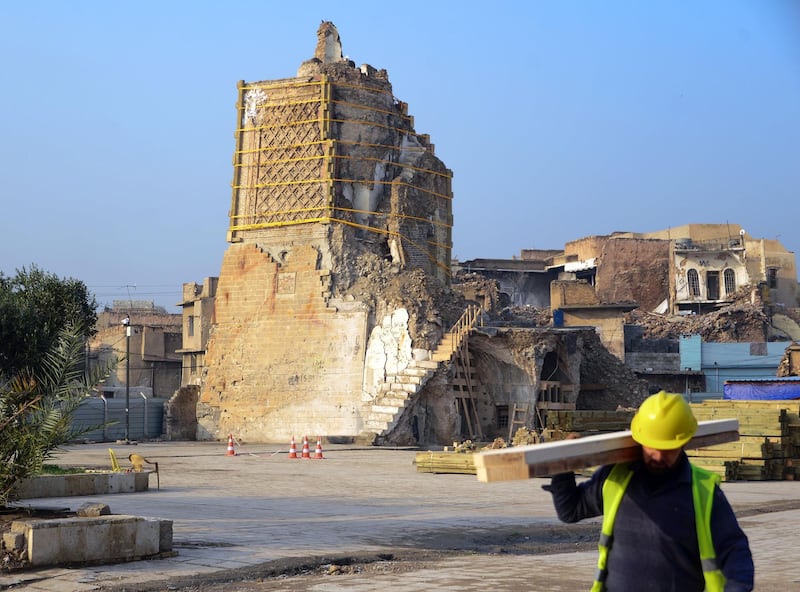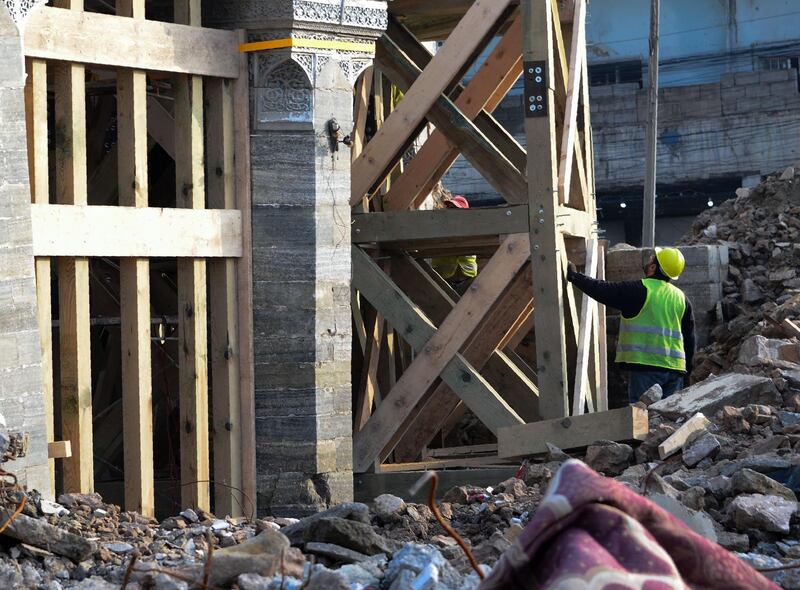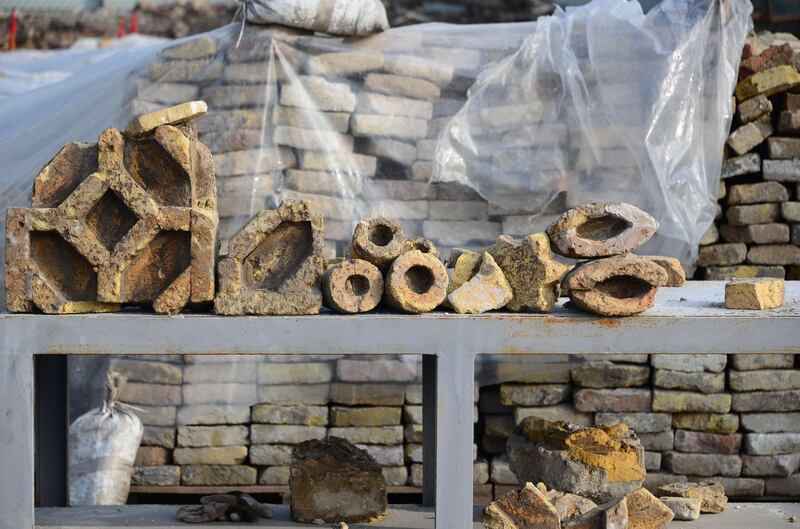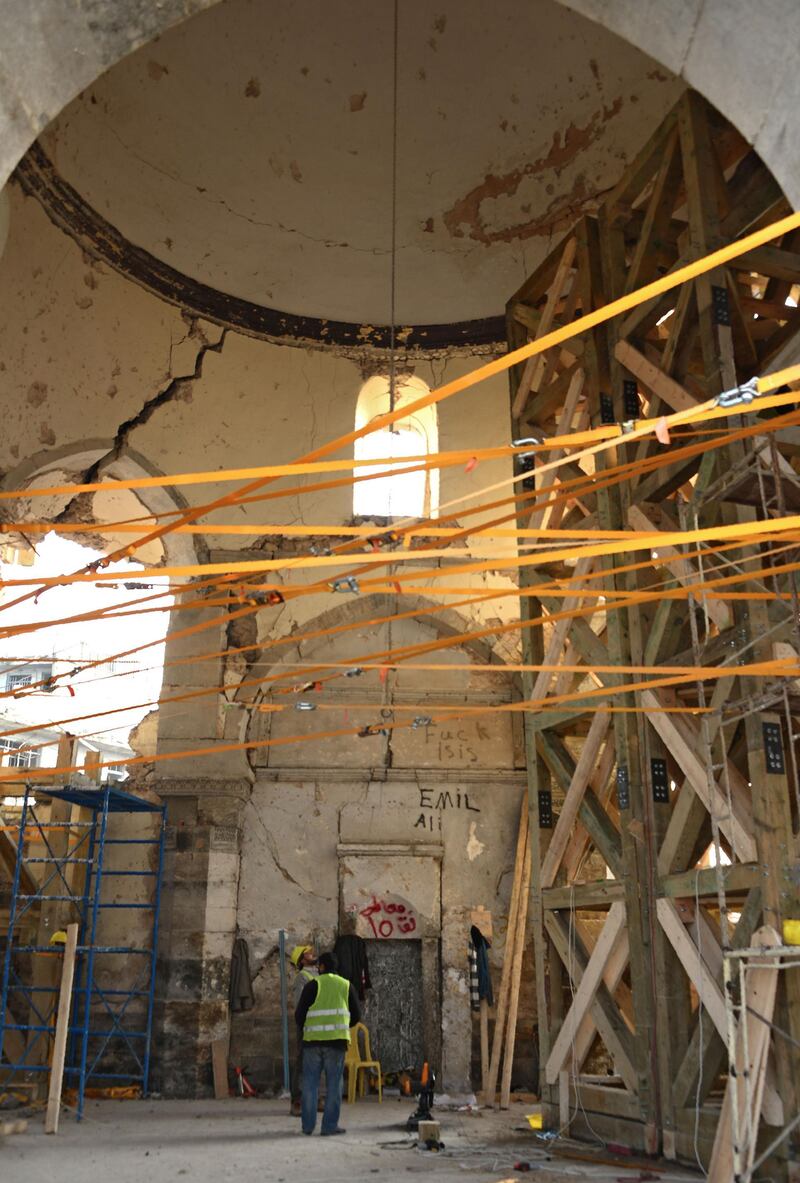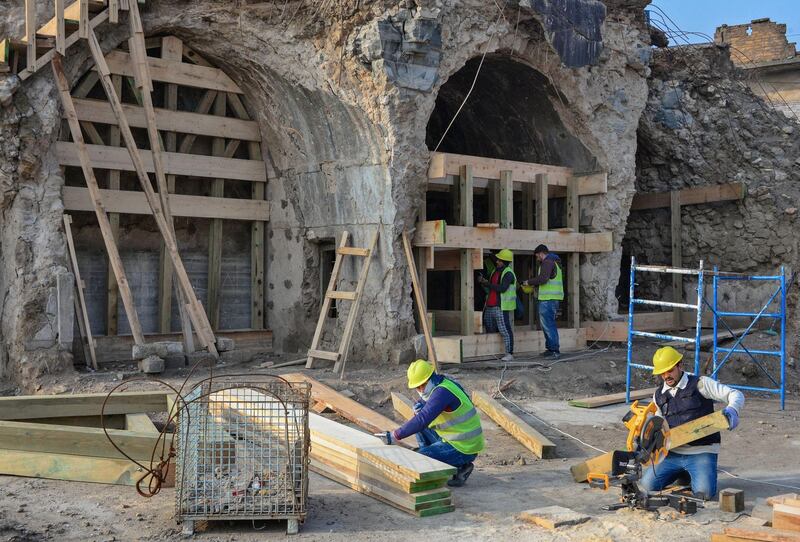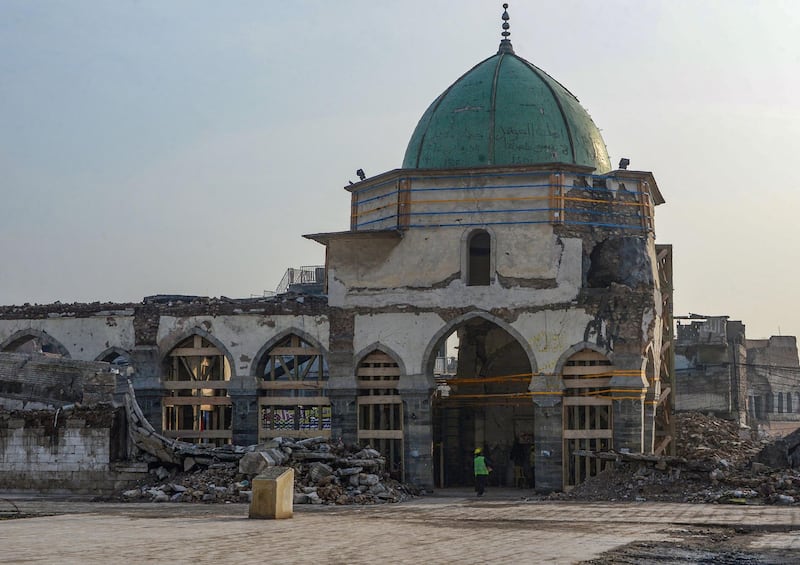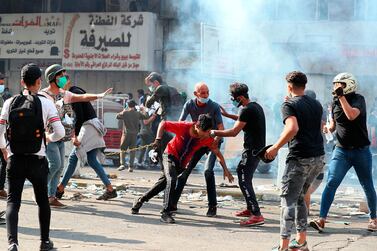Work has begun on the reconstruction of the Great Mosque of Al Nuri in the Iraqi city of Mosul, partially destroyed by ISIS in 2017.
The UAE announced in April last year that it would finance a $50 million (Dh183.7m) Unesco project to rebuild the mosque. Al Nuri was built in the 12th century and nicknamed “the hunchback” because of its leaning minaret.
In 2014, Abu Bakr Al Baghdadi declared ISIS’s caliphate from the mosque.
ISIS later destroyed the mosque during heavy fighting with the Iraqi security forces.
Residents are still battling to rebuild their lives nearly two years later as Mosul was also where ISIS carried out some of its most heinous crimes, such as selling Yazidi women into slavery. The militants burnt printing presses and cafes and blew up archaeological and religious sites such as the shrine of Nabi Yunus.
After the terrorists were ejected from the city in 2017, the authorities and local people who had stayed behind began salvaging what remained.
The Unesco programme is not restricted to Muslim sites – it includes two churches, a Yazidi temple and the central library of Mosul University.
Ernesto Ottone-Ramirez, assistant director-general for culture at Unesco, said in February that the regeneration process was an opportunity to inspire young people and connect them to their heritage.
“We are trying to get back what was once the spirit of Mosul,” he said. “Unesco has more than 70 years of experience in how to shape culture and policies, but this is a little bit different to projects we have done in the past in Cambodia and in Egypt.”
An endowment to 10 people creating modern Islamic art, with a focus on visual and performing arts, will take place over the next five years.
